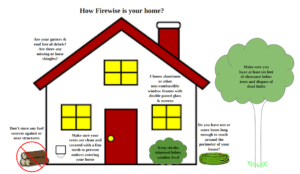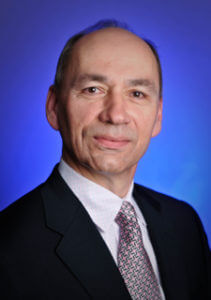By SARAH DOOLITTLE, Four Points News
Nathasha Collmann and Randy Jamieson, Firewise committee chairs for Steiner Ranch and River Place respectively, are worried that local residents have become too complacent about wildfire preparedness.
“After the 2011 fires here in Steiner Ranch, there was obviously a flood of focus and attention and participation around wildfires,” said Jamieson. “And that’s died off.”
He continues that, “Since then, every year all the rain that we’ve had has just made things grow and grow… So we have an even greater fuel source than we had before.” Increased carbon dioxide has also meant increased vegetation growth.
While River Place has a committee of four to oversee the Firewise program for its community of over 1,000 homes, Steiner Ranch, with over 4,500 homes, has just one person — Collmann — keeping the program alive. And, “I will be moving soon,” she said.
Steiner Ranch and River Place are literally connected by a large greenbelt. Grandview Hills is also surrounded by a greenbelt. While a valued natural asset in the community, the greenbelt also represents, “the highest wildfire potential throughout the whole area, which is very alarming,” said Jamieson.
Wildfires “are the new normal”
The Austin Fire Department formed a Wildfire Division in the wake of the 2011 fires, where 23 homes in Steiner were destroyed.
At an informational event held this year, Jamieson noted that, “(The Wildfire Division’s) comment is that the Steiner Ranch and Bastrop fires of 2011 are the new normal. That it’s not a matter of if but when.”
Still, while concern has only increased among fire and other public officials, concern among the public has continued to decline.
“Complacency seems to have set in,” said Jamieson. “It’s because, I think, people just don’t know. If people did know, or did have an understanding of how susceptible they are to wildfires… then everybody would want to do something about it.”
“Resources were poured into Steiner” after the 2011 fire to mitigate fire risks, said Jamieson, but there is still much work to do.
What is Firewise?
Firewise is a program created by the National Fire Protection Association with the intention of teaching people, “how to adapt to living with wildfire and encourages neighbors to work together and take action now to prevent losses,” according to the NFPA website.
To that end, the program offers an abundance of educational tools and materials on their website, as well as certifying communities as Firewise communities. Over a thousand communities in the U.S. are currently Firewise certified.
That’s where people like Collmann and Jamieson come in, community volunteers willing to lead efforts to reduce the risk of wild – and house fires, especially in neighborhoods at greater risk of fire.
River Place is one of the oldest Firewise communities in the U.S. and will celebrate its 10 year Firewise anniversary this year.
An eye for fire safety
Jamieson has only been the River Place Firewise committee chair since March 2018, but as a former railroad man who investigated the root causes of catastrophic train accidents for a living, Jamieson brings to the job a passion for safety and an eye for detail.
Which includes an innovative plan he’s working to develop in cooperation with the Austin Fire Department to use golf course sprinkler systems to keep fires out of or contained within communities. “My goal is to develop that model, and I’ll have that done probably in another (couple of weeks),” said Jamieson.
The plan would also allow courses to be used as places of refuge for those unable to evacuate in the event of a fire.
Home assessments are key
On a smaller but equally important scale is his committee’s need to perform Firewise assessments of residences.
Not only must a committee perform a certain number of assessments each year to maintain its Firewise status, those assessments can also make all the difference to a neighborhood in the event of a wildfire.
Firewise committees generally use a standard form to perform an assessment of a house to determine its “hardness” against fire.
Besides taking precautions such as trimming back trees and bushes, cleaning and screening air vents, and making sure sufficiently long hoses are installed at exterior faucets, Collmann encourages residents to take advantage of the Firewise program.
“I meet with residents individually as requested but have only met with about 100 or so homeowners. The remaining 4,400 homes need to understand their risk and take action.”
Jamieson notes the same issue in River Place, where last year approximately 75 homes asked to have Firewise assessments performed, but this year there have been only three so far.
“People are just not engaged,” he said.
Collmann also notes that the Steiner Ranch HOA needs, “to budget for mitigation work in all the greenbelts adjacent to homes to reduce fuel load and establish shaded fuel break similar to what the county has done in the preserve,” which includes eliminating any growth below six feet and removing piles of dead brush and tree trimmings.
More tips for fire safety
Jamieson has other helpful tips to offer homeowners beyond the checklist covered in a Firewise assessment.
- Keep a fire extinguisher on your back patio, deck or porch if you use fire (grilling, fire pit) in the backyard. Be sure to inspect the extinguisher annually to make sure it is fully charged and in good condition. Shake it periodically so the fire retardant powder is not all packed into the bottom of the extinguisher.
- Don’t bring fire into greenbelts. “I’ve walked behind a gaggle of men smoking,” on the River Place trail said Jamieson. “Something north of 90 percent of wildfires are caused by humans.”
- If you know a fire is coming and you have time, remove flammable objects from around your home. Throw patio furniture cushions (and the furniture if it’s wood) into the pool or onto the back lawn. Also soak the ground around the house.
- Cars should not be left inside the garage if there’s a fire or an evacuation is ordered. Park cars in the driveway but not the road so as to not block access for firefighters.
- Jamieson discourages mulching. “We typically pile this fuel source against our house… We recommend that it be replaced with stone.”
- Jamieson points out that, “The real concern of wildfires is not necessarily the fire itself but it’s the traveling embers… Depending on the size they can travel for a mile,” a phenomenon that allows wildfire to hop across what should be barriers such as multi-lane highways or large bodies of water. The Firewise assessment checklist is meant to eliminate any gaps in your home into which an ember could embed itself and smolder or spark.
A Firewise assessment and these simple tips can make all the difference, said both Jamieson and Collmann. Homes that are fire hardened are more likely to be chosen by fire departments to save in the event of an actual fire. With limited resources in an active fire, departments cannot save every house.
A need for community involvement
Jamieson will continue working to develop a communication strategy and to try and raise awareness within the community, as well as to connect the community with available resources.
Collmann reminds everyone that, “Residents need to take action now before (a fire) event to protect their homes with basic maintenance and firewise practices.”
Rather than wait for the inevitable, Jamieson encourages the community to take action. “Let’s figure out how we can do something.”
To get involved or to schedule a Firewise assessment, email rjamieson@atticusconsultinggroup.com.
For more information about Firewise, visit the National Fire Protection Association’s website at www.nfpa.org.



